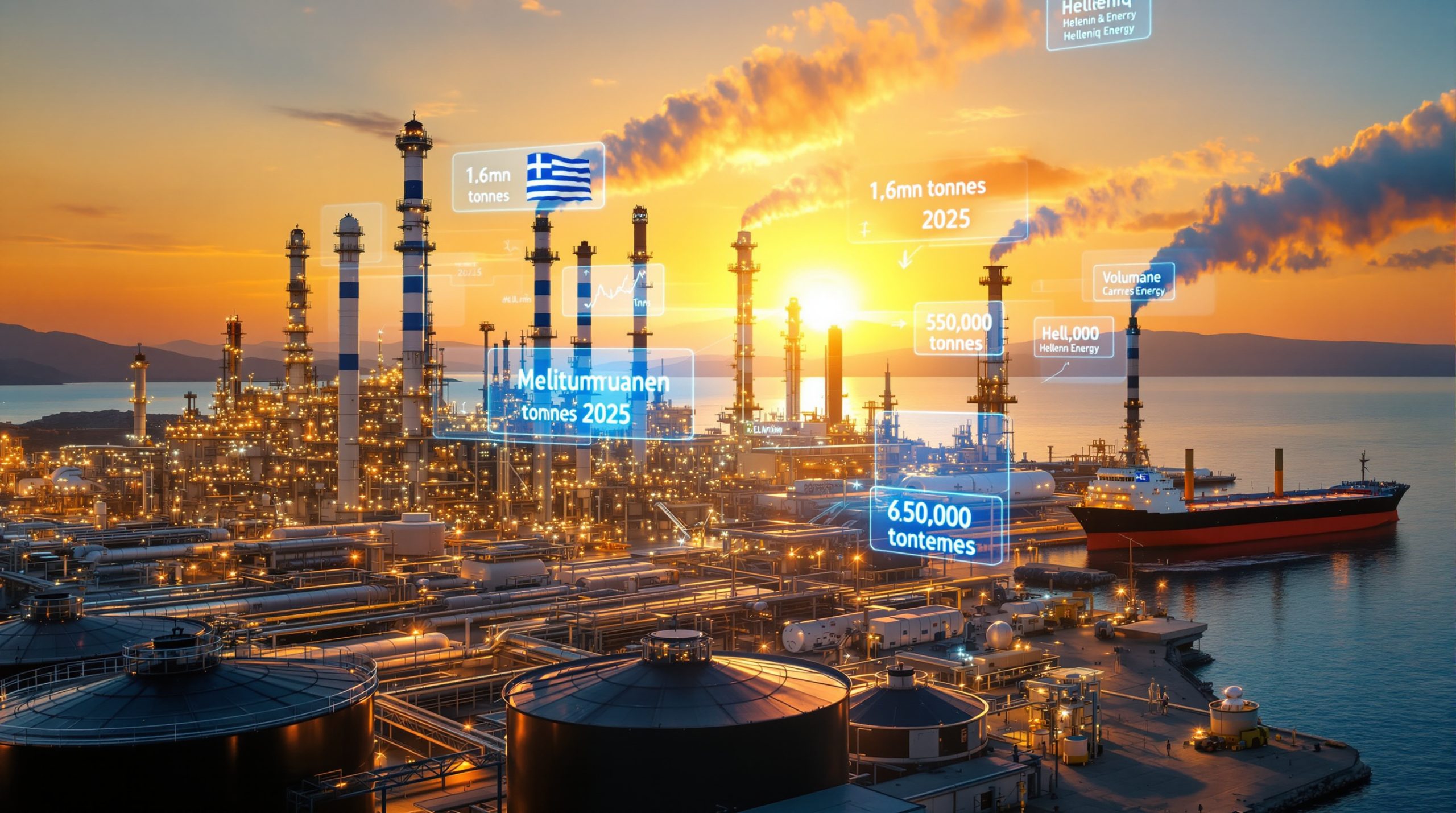Strategic Vulnerability in Critical Materials Supply Chains
The transformation of Western industrial capabilities over the past three decades reveals a fundamental miscalculation in strategic materials planning. The west's heavy rare earth supply chain crisis has emerged from decades of strategic myopia, where immediate economic optimization overshadowed long-term security considerations. Furthermore, the concentration of advanced materials processing in single geographic regions created systemic risks that became apparent only when geopolitical tensions escalated.
This evolution reflects broader patterns where defense establishments focused on traditional resource dependencies while a quiet revolution in materials science was creating new vulnerabilities. For instance, the development of a critical raw materials facility in Europe represents one of the few Western responses to address these growing concerns.
Critical Heavy Rare Earth Elements and Their Applications
| Element | Primary Application | Defense Relevance | Supply Concentration |
|---|---|---|---|
| Dysprosium | High-temperature magnets | Missile guidance systems | 95% China |
| Terbium | Advanced phosphors | Night vision equipment | 93% China |
| Holmium | Precision lasers | Military communications | 91% China |
| Erbium | Fiber optic amplifiers | Secure networks | 89% China |
Fundamental Properties That Define Strategic Importance
The technical characteristics that make heavy rare earth elements irreplaceable stem from their unique atomic structure and resulting physical properties. These materials exhibit magnetic behaviours that cannot be replicated through alternative technologies or substituted with more abundant elements.
Thermal Stability Advantages:
- Dysprosium maintains magnetic coercivity above 200°C
- Terbium preserves ferrimagnetic properties in extreme environments
- Combined heavy rare earth additions increase operating temperature ranges by 150-200°C
- Light rare earth alternatives fail at temperatures above 80-120°C
Magnetic Performance Characteristics:
Heavy rare earth incorporation increases coercivity values by 300-500% compared to light rare earth formulations alone. This enhancement proves critical for applications requiring magnetic stability under mechanical stress, temperature cycling, or electromagnetic interference.
The separation chemistry of heavy rare earth elements presents additional complexity. Adjacent elements in the periodic table exhibit nearly identical chemical behaviours, requiring sophisticated multi-stage extraction processes. Current separation facilities typically employ 25-40 sequential extraction stages to achieve commercial purity levels, compared to 8-12 stages for light rare earth separation.
Economic and Technological Drivers of Market Concentration
China's achievement of processing dominance resulted from coordinated industrial policy spanning multiple decades, combined with favourable geological endowments and strategic cost structure management. However, China export controls have increasingly weaponised this dominance.
Investment Timeline and Scale:
1995-2005: Foundation Development
- State investment in separation technology research
- Development of ionic clay extraction methods
- Establishment of integrated processing clusters
2005-2015: Market Capture
- Aggressive pricing strategies eliminating Western competitors
- Acquisition of international rare earth assets
- Technology transfer through joint venture arrangements
2015-2025: Strategic Weaponisation
- Implementation of export licensing systems
- Price manipulation through artificial supply constraints
- Integration with broader geopolitical objectives
"The systematic approach to building rare earth processing capabilities demonstrates how strategic patience and coordinated investment can create insurmountable competitive advantages in critical materials sectors."
Cost Structure Analysis:
Environmental externalisation provided Chinese processors with cost advantages estimated at 35-50% compared to Western facilities operating under strict environmental standards. Labour cost differentials contributed an additional 20-30% advantage, whilst economies of scale from geographic clustering reduced per-unit processing costs by 15-25%.
Current Supply-Demand Mathematics
The structural deficit in heavy rare earth availability reflects mathematical realities that cannot be resolved through market mechanisms alone. Current production capacity falls dramatically short of projected requirements across multiple industrial sectors, highlighting the west's heavy rare earth supply chain crisis.
Dysprosium Supply Gap Analysis:
- Current global production: ~200 metric tons annually
- 2030 projected demand: 450-600 metric tons annually
- Required capacity increase: 125-200%
- Western production capacity: <15 metric tons annually
Electric Vehicle Impact Projections:
Each battery electric vehicle requires 30-50 grams of dysprosium and 10-20 grams of terbium for permanent magnet traction motors. Global electric vehicle production projections of 40-50 million units annually by 2030 imply heavy rare earth requirements of 1,200-2,500 metric tons for the automotive sector alone.
Moreover, the relationship between critical minerals energy security and the renewable energy transition compounds these supply pressures.
Wind Energy Sector Demand:
Offshore wind turbines utilise permanent magnet generators containing 200-600 kilograms of rare earth materials per turbine, with heavy rare earth content representing 8-15% of total rare earth requirements. Planned offshore wind capacity additions through 2035 will require 15,000-25,000 metric tons of heavy rare earth elements.
Price Discovery and Market Distortions
The Rotterdam-Shanghai price differential for dysprosium oxide ($900/kg versus $255/kg) illustrates systematic market manipulation rather than natural price discovery mechanisms. These spreads reflect multiple layers of artificial constraint and geopolitical leverage extraction.
Cost Component Breakdown:
- Physical logistics and transportation: 12-18%
- Processing inefficiencies outside China: 25-35%
- Risk premiums and supply uncertainty: 40-60%
- Geopolitical leverage extraction: 80-150%
Industrial Impact Assessment:
Permanent magnet manufacturers report margin compression of 25-40% due to heavy rare earth price volatility. Electric vehicle manufacturers face cost increases of $300-600 per vehicle when sourcing materials outside Chinese supply chains. Wind turbine projects experience delays averaging 8-18 months due to magnet supply constraints.
According to Reuters analysis, Western nations are scrambling to address this critical supply gap as geopolitical tensions continue to deepen.
Western Response Strategies and Implementation Timelines
Current development programmes across Western nations represent significant investment commitments but face substantial technical and commercial challenges in achieving meaningful supply chain independence. Furthermore, recent policy developments such as the critical minerals executive order demonstrate growing government recognition of these vulnerabilities.
Primary Development Projects:
Near-term Capacity (2025-2028):
- MP Materials Mountain Pass expansion: Limited heavy rare earth content
- Lynas Corporation Texas facility: 15,000 metric tons separation capacity
- European Union strategic stockpile programme: 18-month supply buffer
Medium-term Development (2028-2035):
- Brazilian ionic clay projects: 200-400 metric tons annual potential
- Australian heavy rare earth exploration: Multiple early-stage projects
- Canadian separation technology partnerships: Process innovation focus
Technology Development Initiatives:
Research programmes focus on three primary approaches: alternative permanent magnet chemistries reducing heavy rare earth requirements, advanced recycling technologies recovering materials from end-of-life products, and breakthrough separation processes reducing processing costs and environmental impact.
Geopolitical Dynamics and Export Controls
China's progressive tightening of export restrictions follows established patterns of strategic resource leverage, coordinated with broader technology competition and industrial policy objectives. Consequently, the US‑China trade war impacts extend far beyond traditional trade metrics into strategic materials domains.
Export Control Evolution:
Recent regulatory developments include licensing requirements for defence-related applications, quota systems limiting total export volumes, and coordination mechanisms with allied nations including Russia and North Korea. These measures create artificial scarcity whilst maintaining plausible commercial justifications.
Strategic Coordination:
Export restrictions increasingly coordinate with semiconductor controls, advanced manufacturing technology limitations, and broader economic security measures. This integrated approach maximises leverage whilst distributing risk across multiple policy domains.
The BBC reports that Western governments are now recognising the urgent need to address these critical supply chain vulnerabilities.
Timeline for Western Supply Chain Independence
Realistic assessment of development timelines indicates continued vulnerability extending well into the next decade, with partial independence achievable by 2035 under optimal scenarios. In addition, the west's heavy rare earth supply chain crisis will likely intensify before meaningful alternatives emerge.
Short-term Reality (2025-2030):
- Western processing capacity reaches 20-30% of requirements
- Emergency stockpiles provide 8-15 months buffer capacity
- Chinese export controls maintain maximum leverage
- Alternative sources contribute <5% of total supply
Medium-term Prospects (2030-2040):
- Integrated Western supply chains achieve 40-60% self-sufficiency
- Technology advances reduce material intensity by 15-25%
- Recycling infrastructure provides 20-30% of supply requirements
- Geopolitical tensions may intensify rather than resolve
Investment Implications and Strategic Opportunities
The structural nature of heavy rare earth deficits creates investment opportunities across multiple categories, from direct exposure through mining and processing companies to indirect beneficiaries of supply chain restructuring.
Direct Investment Themes:
- Heavy rare earth mining companies with proven reserves and development timelines
- Separation technology developers with proprietary processes
- Permanent magnet manufacturers with secured feedstock arrangements
Enabling Technology Opportunities:
- Advanced recycling technologies recovering heavy rare earths from electronic waste
- Alternative magnet chemistries reducing dependency requirements
- Supply chain logistics and strategic storage infrastructure
Risk Management Strategies:
Diversified exposure through rare earth ETFs provides broad sector participation whilst minimising single-company risks. Geographic diversification across multiple Western development projects reduces political and operational risks. Strategic materials stockpiling companies benefit from both private sector demand and potential government contracts.
Conclusion: Strategic Materials in Great Power Competition
The west's heavy rare earth supply chain crisis represents more than a commercial challenge. It exemplifies how strategic materials dependencies create vulnerabilities that extend far beyond immediate economic impacts.
The mathematical realities of supply-demand imbalances, combined with the technical impossibility of rapid capacity development, ensure continued vulnerability throughout the remainder of this decade. Western nations face a fundamental choice between accepting continued dependence with its associated risks or committing to the substantial investments required for long-term supply security.
Success in navigating this transition will require unprecedented coordination between government policy, private sector investment, and international cooperation among allied nations. The countries and companies that successfully execute this transition will emerge with competitive advantages in the clean energy economy, advanced manufacturing, and defence technologies.
Those that fail to adapt face continued exposure to supply disruption, price manipulation, and strategic coercion through materials dependencies that cannot be quickly resolved through market mechanisms alone.
Looking to Capitalise on Critical Materials Opportunities?
Discovery Alert's proprietary Discovery IQ model delivers instant alerts on significant ASX mineral discoveries, helping investors identify opportunities in strategic materials sectors before they gain broader market attention. With heavy rare earth supply chains creating urgent demand for Western alternatives, subscribers gain access to actionable insights covering critical materials exploration across Discovery Alert's comprehensive database of historic mining discoveries and their exceptional returns.




